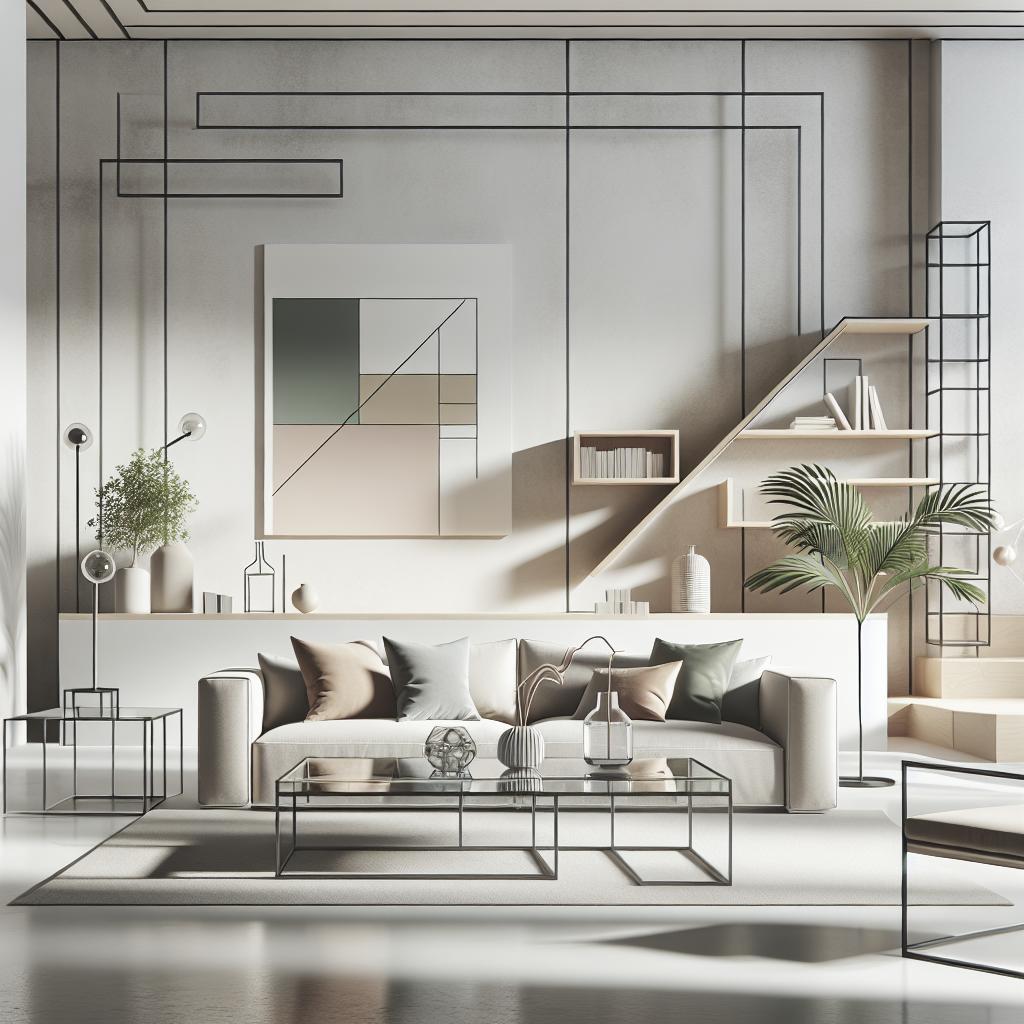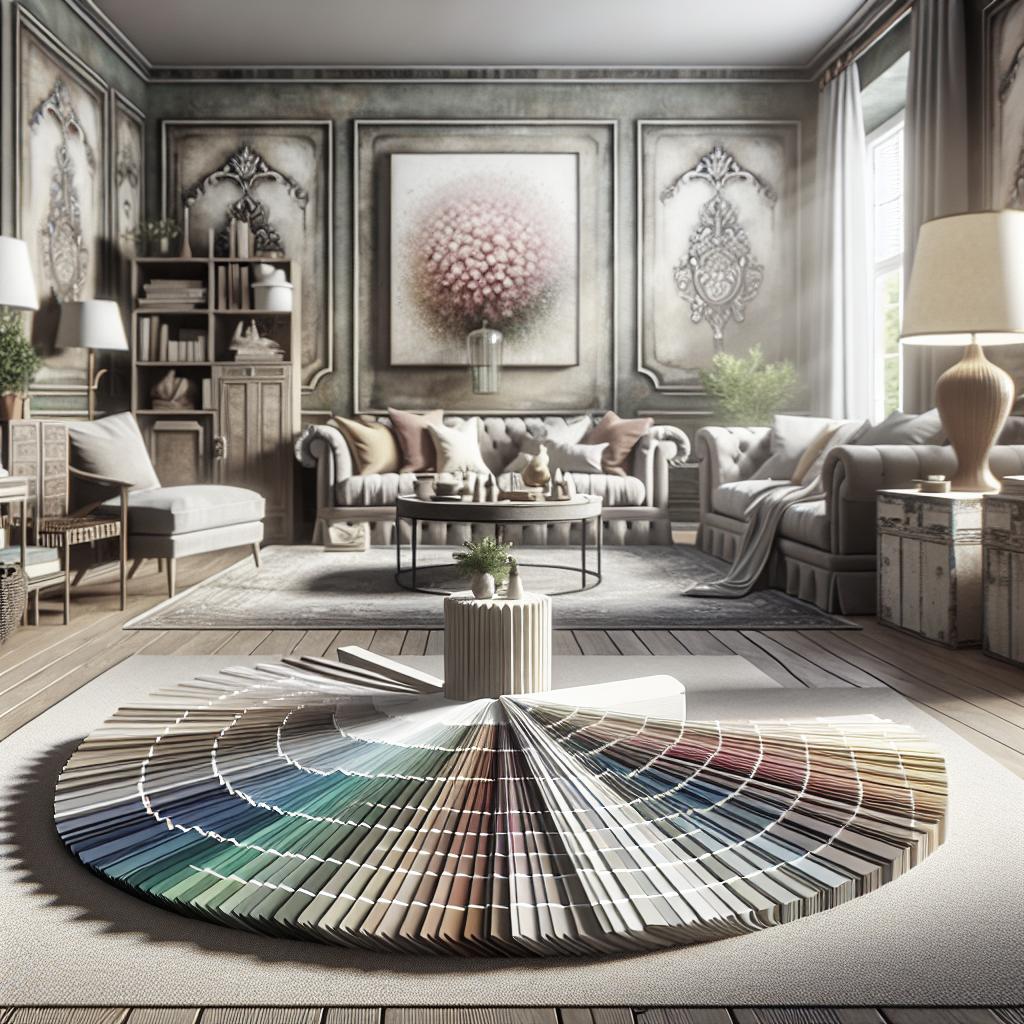The allure of nature is timeless, and more than ever, people are seeking ways to incorporate the serenity of the natural world into their living spaces. Biophilic design, which integrates nature into our built environments, promotes a harmonious relationship between humans and the ecosystems we’re part of. Whether you live in an urban apartment or a rustic house, biophilic design offers an opportunity to reinvigorate your home with the calming and rejuvenating elements of nature. This blog post explores how you can infuse your residence with natural light, fresh air, greenery, and natural motifs to create a soothing and productive environment. Additionally, we’ll explore the burgeoning world of biophilic design courses, discuss the benefits of this nature-focused approach, and provide practical tips to invite greenery and creativity into your home. Dive into these mindful design practices and embrace nature’s therapeutic beauty right at home. ## Here is How To Incorporate Biophilic Design Into Your Home ### 1. Fresh Air One of the simplest yet most effective ways to introduce biophilic design into your home is by ensuring a good flow of fresh air. Nature offers endless benefits, and fresh air is a quintessential element that boosts mood and enhances mental clarity. Regularly opening windows and doors can facilitate natural ventilation, reducing indoor pollutants and promoting a healthier indoor environment. Consider installing air purifiers and vent systems designed to imitate the freshness of outdoor air. Bringing in purifying plants like peace lilies and spider plants can also contribute to improved air quality. These natural tools assist in filtering toxins and balancing humidity levels, ensuring that your space is not only visually connected to nature but also maintains the purity and freshness nature offers. ### 2. Maximise Natural Light Natural light is an essential component of biophilic design. It shapes the mood and energy of a space, enhancing both aesthetic and emotional well-being. To maximize natural light, be strategic about window placement and treatments. Opt for sheer or light-filtering curtains to allow sunlight to gently illuminate your rooms without harsh glare. In spaces where natural light is limited, using mirrors can be an effective technique to reflect light, making the room feel larger and brighter. Additionally, consider incorporating skylights to draw in more light from above, creating a dynamic interplay of light and shadow within your home. With thoughtful design, natural light can transform your environment into a warm and inviting sanctuary. ### 3. Incorporate Plants Plants are a foundational element of biophilic design, bringing life, color, and texture into your home. Whether it’s a small herb garden in the kitchen or a grand fiddle leaf fig in the living room, plants introduce freshness and vitality. Different plants can serve various purposes; succulents and cacti add unique forms and require minimal maintenance, while lush greenery like ferns and monsteras thrive with a little more attention. The introduction of plants not only beautifies your space but also supports your mental and physical health. Studies indicate that proximity to plants reduces stress and improves focus, making them a boon for home offices or studying nooks. Choosing a variety of plants that suit your lifestyle and space can enhance your home’s aesthetic and bring nature closer to you. ### Show off your Plants With These Planters and Stands: Displaying your cherished plants can elevate both the plants themselves and the room they inhabit. Opt for planters made from natural materials like terra cotta, wood, or bamboo to enhance the organic feel. These materials blend seamlessly into biophilic design principles, adding earthy textures that complement the plants they hold. Plant stands and hanging planters can add levels and dimensions to your plant displays, making your indoor garden more dynamic. Whether you aim for a minimalist look or a lush, layered jungle feel, the right planter and stand can accentuate your greenery, becoming an artful aspect of your home. Experimenting with different arrangements can refresh and transform a space, offering endless possibilities for creativity and personalization. ### 4. Use Natural Materials Incorporating natural materials into your design fosters a textural connection to the outdoors. Materials like wood, stone, bamboo, and rattan introduce warmth and authenticity. Choosing sustainable, responsibly sourced materials not only contributes to a healthier environment but also offers peace of mind knowing your home is aligned with nature. Consider natural wood flooring or exposed wooden beams to give your home a rustic charm. Stone countertops or walls can add solidity and timelessness, while woven textiles and rugs introduce comfort and subtle artistry. Each natural material brings unique patterns and hues, working harmoniously to create a cohesive, naturally inspired interior. ### 5. Embrace the Shapes of Nature The natural world is full of fluid, organic forms that exude relaxation and beauty. Bringing these shapes into your home can soften lines and create a more inviting space. Choose furniture and decor characterized by curves and asymmetrical shapes to mimic the irregular appeal of nature. Consider a wavy wooden shelf or a circular coffee table with soft curves. Organic shapes in furniture, lighting, and artwork can help break the monotony of straight lines found in most modern designs, encouraging a sense of ease and flow. By integrating these forms, you’ll capture the essence of nature’s unpredictability and beauty. ### 6. Sound of Water The gentle murmur of a babbling brook or a cascading waterfall can be incredibly soothing. Incorporating the sound of water into your home can enhance relaxation and promote tranquility. Adding a small indoor water feature, such as a tabletop fountain or a fish tank with a small water pump, creates an auditory connection to nature. These features are not only calming but can also serve as captivating focal points, encouraging mindfulness and peace. The sound of water promotes a serene atmosphere, transforming any room into a personal retreat or meditation space, perfect for unwinding after a long day. ### 7. Colours of Nature Nature’s palette is vast and varied, and incorporating its colors into your home can evoke feelings of tranquility and energy. Earth tones like greens, browns, and blues are foundational, but don’t shy away from the soft pastels of sunrise or the vibrant hues of a sunset. Use nature-inspired colors in your walls, textiles, and art to create harmony within your space. Influences from the changing seasons can guide your choices—think warm tones for autumn or fresh greens for spring. Combining colors in a way that reflects the natural world creates an environment that is both comforting and inspiring. ### 8. Add a Piece of Art Art provides a unique opportunity to bring nature into your indoor space through the lens of creativity. Whether it’s a photograph of a breathtaking landscape, an abstract painting inspired by botanical forms, or a sculpture that replicates the essence of flowing water, art can capture the beauty of nature in diverse forms. Select artworks that complement your natural theme—pieces that speak to your personal connection with nature and integrate seamlessly with your overall design. Hanging nature-themed art where it’s easily visible can create focal points that draw attention and evoke a sense of wonder, keeping your home aligned with the calming and inspiring influence of the outdoors. ## Biophilic Interior Design Online Course With increasing interest in biophilic design, various online courses provide in-depth exploration and guidance on how to integrate this design philosophy into living spaces. These courses often cover fundamentals such as the history and principles of biophilic design, alongside practical applications and case studies. Taking an online course can enhance your understanding and application of biophilic elements, allowing you to create cohesive, nature-centered spaces. Courses often feature insights from leading designers and offer interactive components where you can craft your design plans and receive feedback from peers. This educational investment not only enriches personal projects but could also be a stepping stone for a career in design. Online courses can also provide valuable connections with a community of like-minded individuals who share a passion for harmonizing our living environments with nature. Engaging with others’ ideas and challenges can expand your vision and inspire new creative avenues. ## How To Could Incorporate Greenery Into Your Home Greenery vastly contributes to the ambiance and health of your living spaces. Indoor vertical gardens or green walls are an increasingly popular way to maximize plant exposure without cluttering floor space. These installations are living art pieces, purifying the air and making an impactful design statement. For those with limited space, hanging pots, window sill herb gardens, or small terrariums can introduce plant life effectively. Experimenting with plant placement and types can infuse personality into your home. Whether you choose low-maintenance varieties like pothos and snake plants or opt for blossoming flora, strategizing the integration of greenery will transform your abode into a vibrant, inviting sanctuary. Creating a rotation schedule for your plants, moving them from high to low light areas, or integrating seasonal plants can keep your space dynamic and ever-changing. This approach allows constant interaction with your environment, keeping your connection to nature fresh and enjoyable. ## Biophilic Design Benefits Embracing biophilic design extends beyond environmental aesthetics to significantly impact well-being and health. Studies have shown that integrating natural elements into our homes can decrease stress, improve mood, and increase productivity. Natural elements stimulate our senses and encourage emotional connections, making us feel more grounded and content. Biophilic design can also play a role in enhancing physical health. By improving indoor air quality, promoting regular exposure to natural light, and maintaining a soothing environment, these practices support better sleep and overall health. This design approach can even improve cognitive function, making it an excellent choice for learning and working environments. From a sustainability perspective, biophilic design encourages the use of natural, renewable materials and energy-efficient practices. This mindset not only creates beautiful spaces but also fosters a commitment to sustainable living, contributing positively to the planet’s health. ## Other articles you might like: – Discovering the Magic of Minimalist Living – Sustainable Home Building Trends for The Future – Transform Your Backyard Into a Serene Oasis – Mastering Feng Shui: A Beginner’s Guide – The Art of Mindful Interior Design ### Future Prospects Below is a table summarizing the key elements of biophilic design integration: “`html
| Element | Description | Benefits |
|---|---|---|
| Fresh Air | Improve indoor ventilation through windows, air purifiers, and plants. | Boosts mood, enhances mental clarity, reduces pollutants. |
| Natural Light | Maximize sunlight exposure using strategic window placement, mirrors, skylights. | Improves mood, creates warmth, reduces energy costs. |
| Incorporate Plants | Introduce plants in various forms for aesthetic and health benefits. | Reduces stress, improves air quality and focus. |
| Natural Materials | Use wood, stone, bamboo to create texture and warmth. | Enhances sustainability, connects space to nature. |
| Shapes of Nature | Integrate organic forms and asymmetrical designs. | Encourages relaxation, adds visual interest. |
| Sound of Water | Add indoor water features for relaxation and focus. | Creates a calming ambience, promotes mindfulness. |
| Colours of Nature | Incorporate earth tones and seasonal colors through various elements. | Evokes tranquility, harmonizes space. |
| Piece of Art | Add artworks that reflect natural beauty and elements. | Enhances aesthetic, evokes inspiration and connectivity. |
“` Incorporating biophilic design into your living space fosters a healthier, more balanced lifestyle. As you welcome the upcoming trends, integrating these elements will not only refresh your surroundings but also redefine your connection to the natural world.


